
Phidippus regius female 2 Spooder Nest
The salticid spider Phidippus regius C.L. Koch, 1846 is documented preying on small frogs ( Hyla spp., Osteopilus septentrionalis) and lizards ( Anolis carolinensis and Anolis sagrei) in Florida, USA. Female as well as male P. regius were engaged in feeding on this type of vertebrate prey.
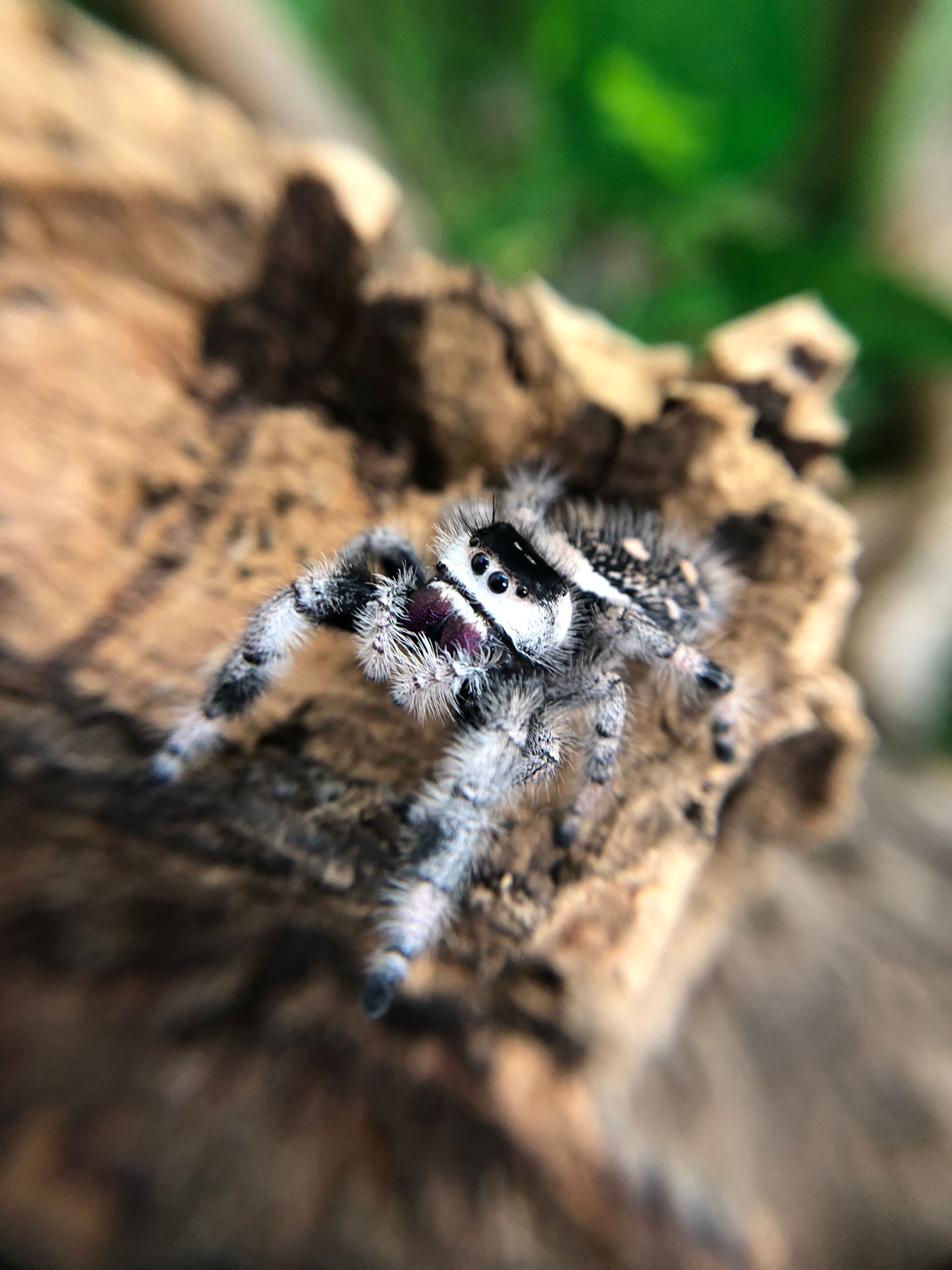
Phidippus regius Nord Florida Springspinnen Shop KrabblerKiste
The phidippus regius is a species of jumping spider that is found in the southeastern US. Learn more in this fact file.. Regal jumping spiders are most common in the Floridian peninsula, which is why the species is sometimes called the "Florida regal jumping spider." Still, they can also be found in the Greater Antilles, the Bahamas, and.
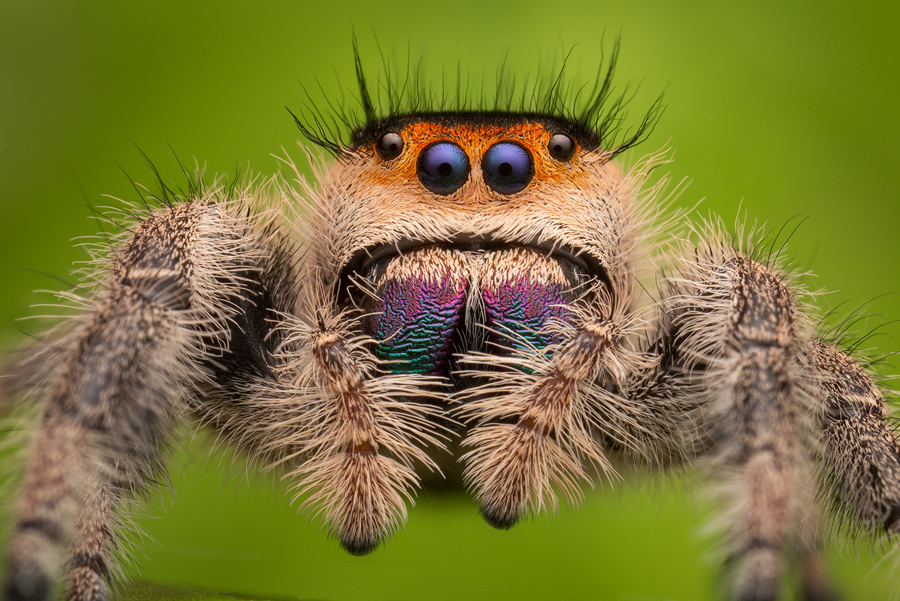
Phidippus regius Florida Patrick Zephyr Photography
Humidity (preferably) should be between 50-60%. You'll want to increase your humidity while your spider is molting to ease their process (70-80%). Humidity is achieved by misting bottled water on one side of the enclosure every 2-3 days or a bit more often if your spider is molting and needs the extra boost.
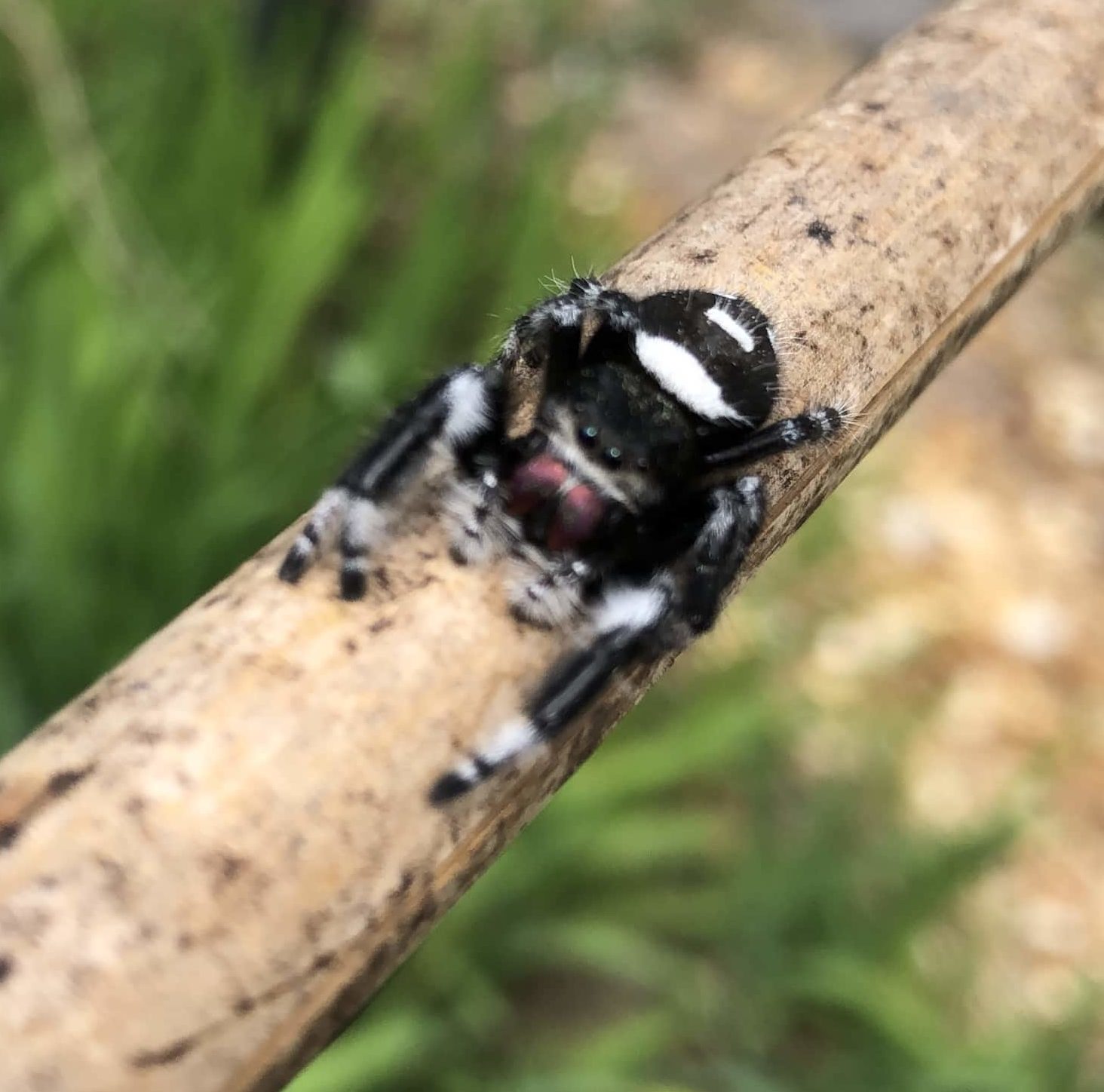
Phidippus regius (Regal Jumping Spider) in Crawfordville florida, Florida United States
encountered in Florida is Phidippus regius C.L. Koch. This species is aptly named in terms of its size, as it is the largest jumping spider in eastern North America. The species is found in the southeastern U.S., the Greater Antilles, and the Bahamas, but is most common in peninsular Florida. Abbreviated Synonymy Phidippus regius C.L. Koch, 1846

Phidippus regius "Nord Florida" (Springspinne) kaufen
Keys for recognizing specimens of Phidippus regius, P. otiosus and P. audax are described in: Edwards G.B. 1981. The regal jumping spider Phidippus regius (Araneae: Salticidae). Ent. Circ.,. G. B. Edwards, Ph.D. 2003. Florida Department of Agriculture and Consumer Services. Contributed by john and jane balaban on 6 September, 2004 - 8:47pm

Regal Jumping Spider (Phidippus regius) Jumping spider, Incredible creatures, Spider art
Common Name: Jumping spider, Regal jumping spider Scientific Name: Phidippus regius Native to: North America, Florida, Bahamas, Cuba and Jamaica Life Span: Males 1 - 2yrs & Females 1 - 3yrs Size: Varies greatly for each individual, as little as 5mm to as big as 25mm Temperament: Generally docile, some can be skittish but rarely bite for no reason.
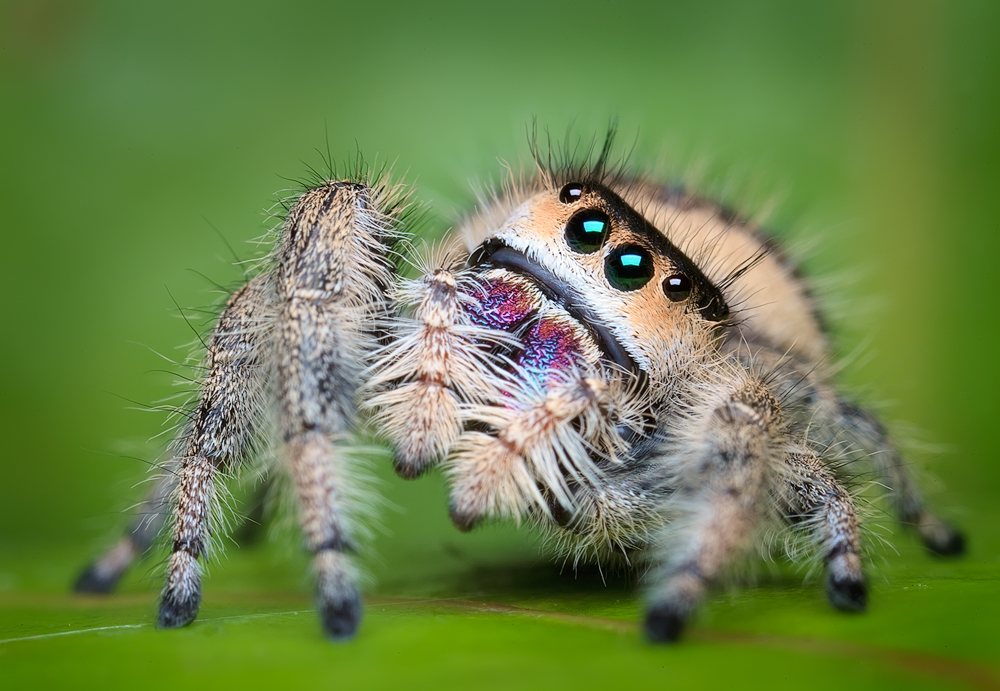
Phidippus regius "Regal Jumper"
Phidippus regius, also known as the Regal Jumping Spider, is a very popular and well-received type of spider. In fact, it's the most commonly-kept species of jumping spider! The popularity of this spider isn't surprising in the least.
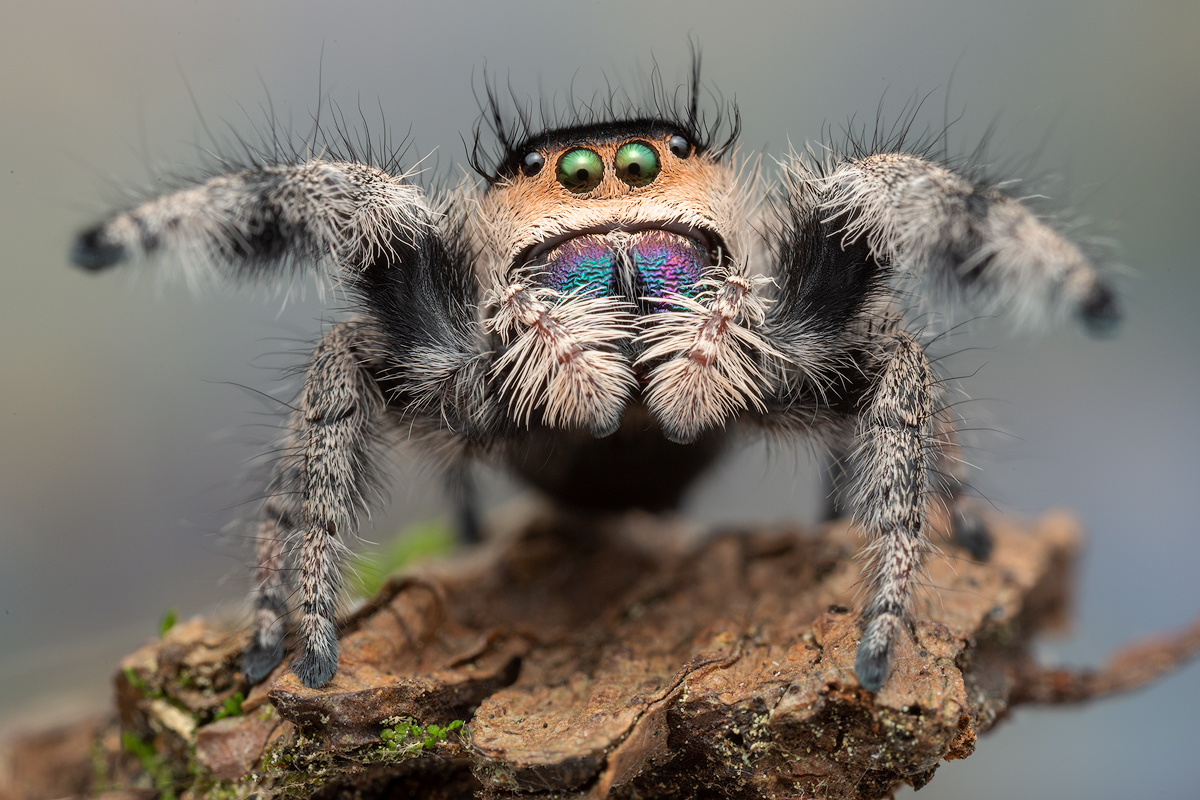
Phidippus regius Florida Patrick Zephyr Photography
The Phidippus Regius, or the Regal Jumping Spider, is a preferred species and has become a household name. With more information available about exotic pets on the internet, people are gradually warming up to the idea of keeping these unusual creatures as pets.
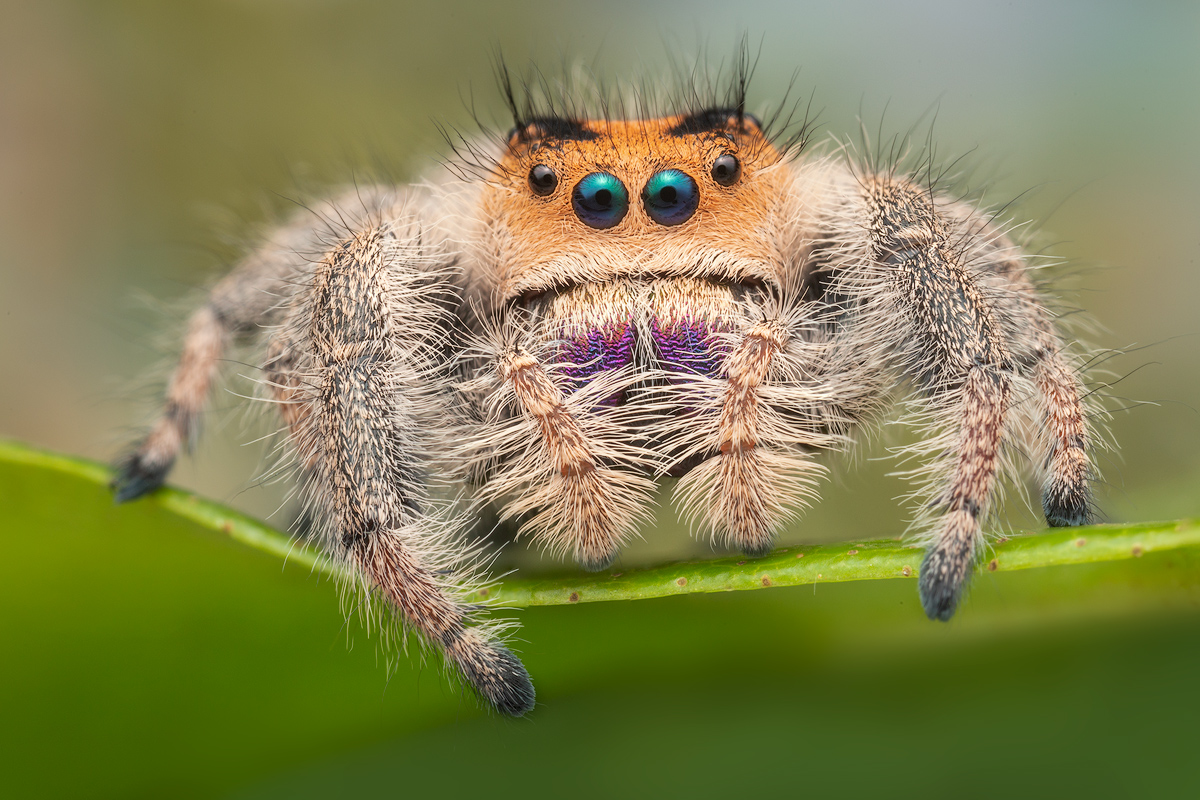
Phidippus regius Florida Patrick Zephyr Photography
Distribution P. regius occurs in the southeastern United States, Bahamas, Bermuda, Greater Antilles, and has been introduced to Easter Island. In the United States, it occurs throughout the Southeast from South Mississippi through North Carolina and South Carolina (most abundant in Florida ). [4] References

Phidippus regius (adult female) Florida
Caring for a Phidippus regius in captivity requires a terrarium that mimics the spider's natural habitat as closely as possible. The ideal tank size should be at least 1 gallon and should ideally have a secure, escape-proof lid. Ideal water parameters for them include a pH range of 6.0 to 8.3 and a hardness range of 8 to 10 dGH.
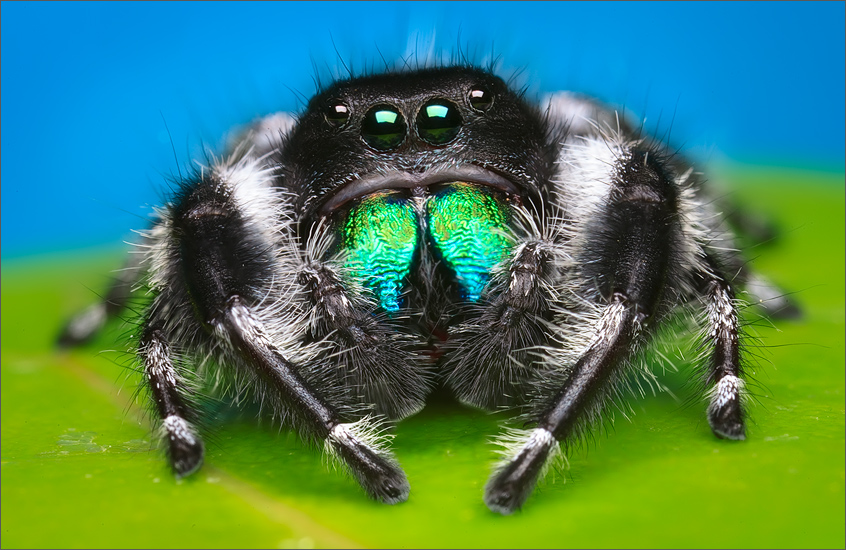
Phidippus regius "Regal Jumper"
The Phidippus regius - belonging to the genus Phidippus and commonly referred to as regal jumping spiders - are large jumping spiders commonly found in the southeastern United States with more vibrant colors found among the females in southern Florida. Phidippus regius is their scientific name but people also call them regal jumping spiders.
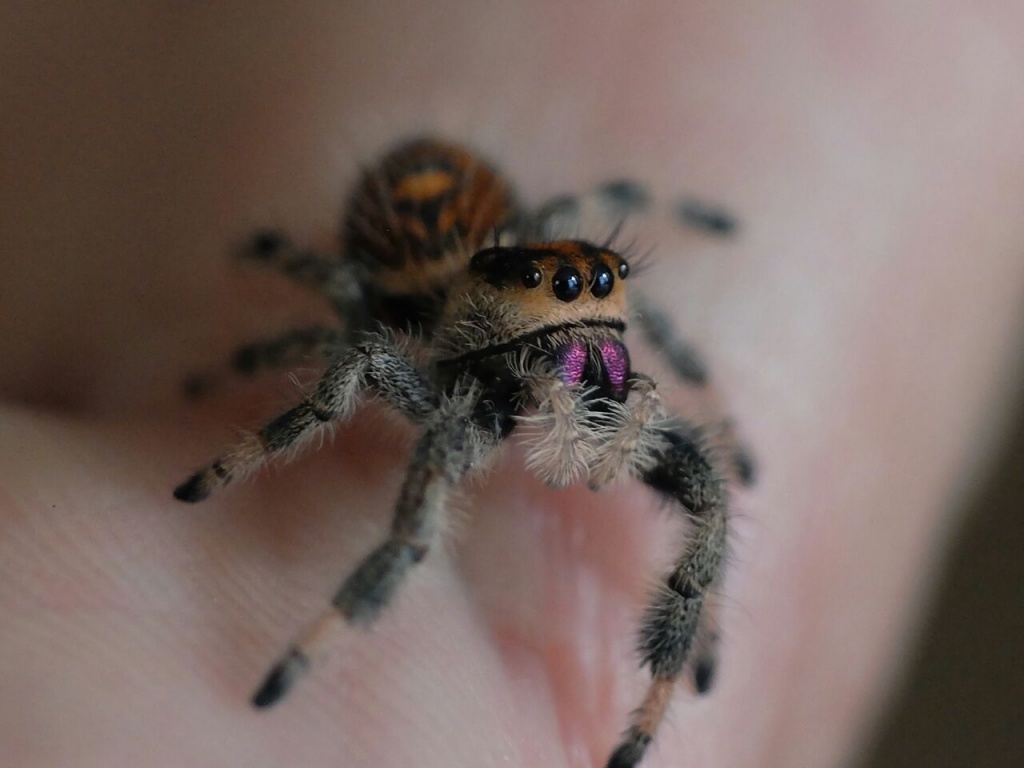
Florida Springspinnen, Phidippus Regius Spinnen
Phidippus regius is one of the few spiders that can be sexed in the early instars. Juvenile females of more southern populations attain a scale cover as early as the 3rd instar; males are stark black and white throughout their life cycle. Identification (Back to Top) Jumping spiders can be recognized easily by their eye arrangement.
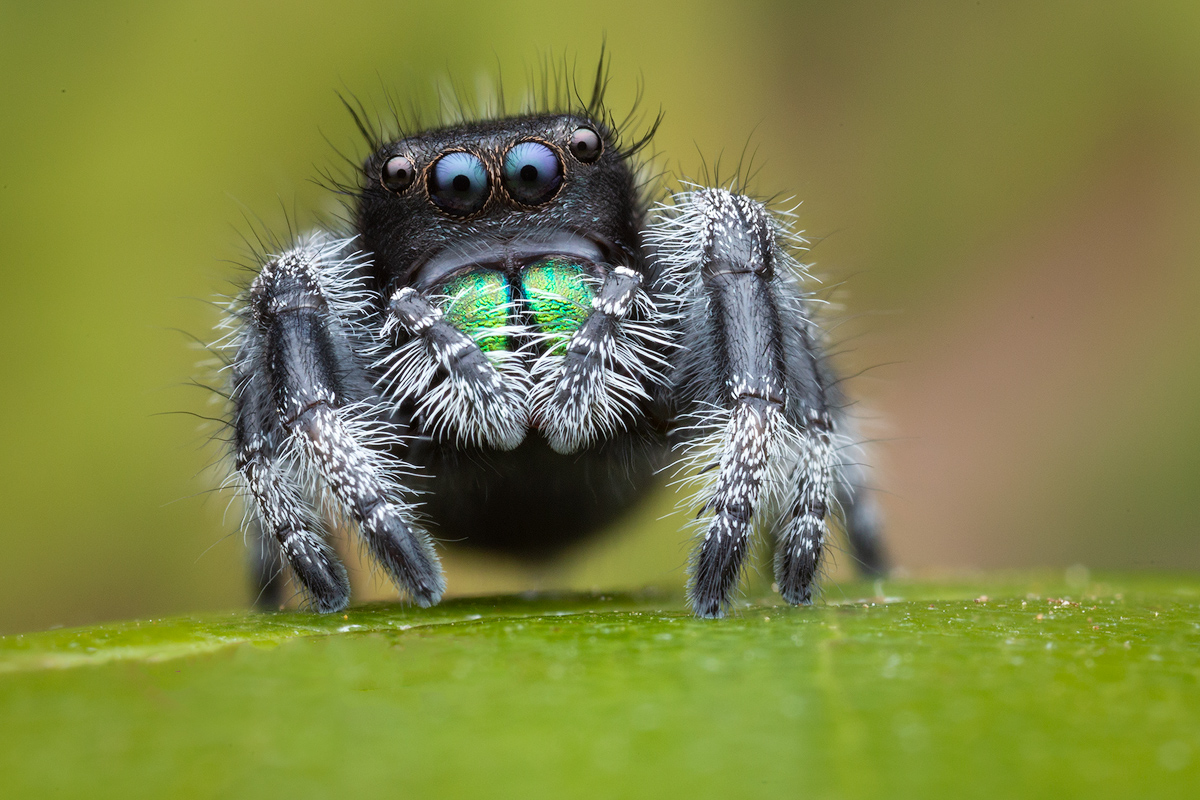
Phidippus regius Florida Patrick Zephyr Photography
Size: Females are 0.28-0.87 in (0.7-2.2 cm) and males are 0.24-0.71 in (0.6-1.8 cm). Color: Females are either orange or gray with some stripes and spots while males bear the same patterns but in white on their black bodies. Other Characteristic Features: The chelicerae have a violet, purple, and green iridescence.
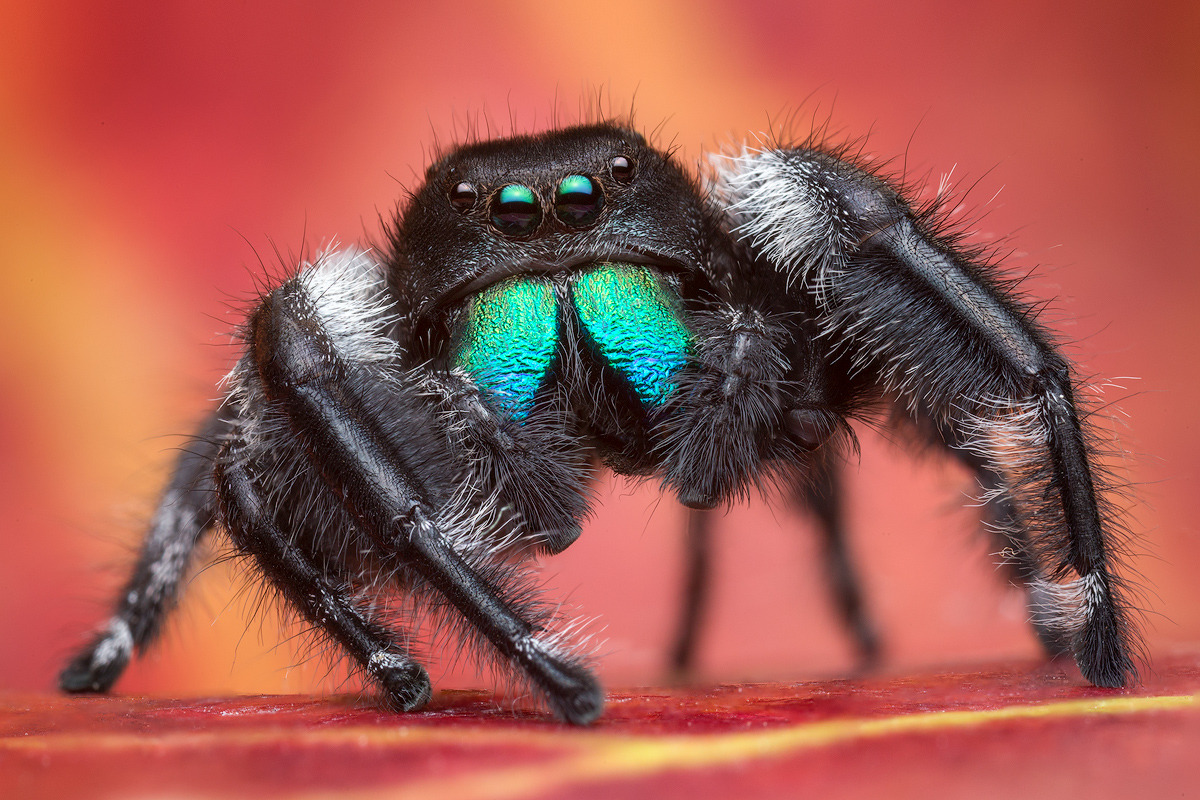
Phidippus regius Florida Patrick Zephyr Photography
Phidippus regius is one of the few spiders that can be sexed in the early instars. Juvenile females of more southern populations attain a scale cover as early as the 3rd instar; males are stark black and white throughout their life cycle. Identification Jumping spiders can be recognized easily by their eye arrangement.

Phidippus regius (Nord Florida) Home of Insects
The jumping spider (Phidippus regius) is commonly found in tropical regions, mainly in the southeastern United States, Florida, and the West Indies. This is a list of places to find these cute little hairy spiders.
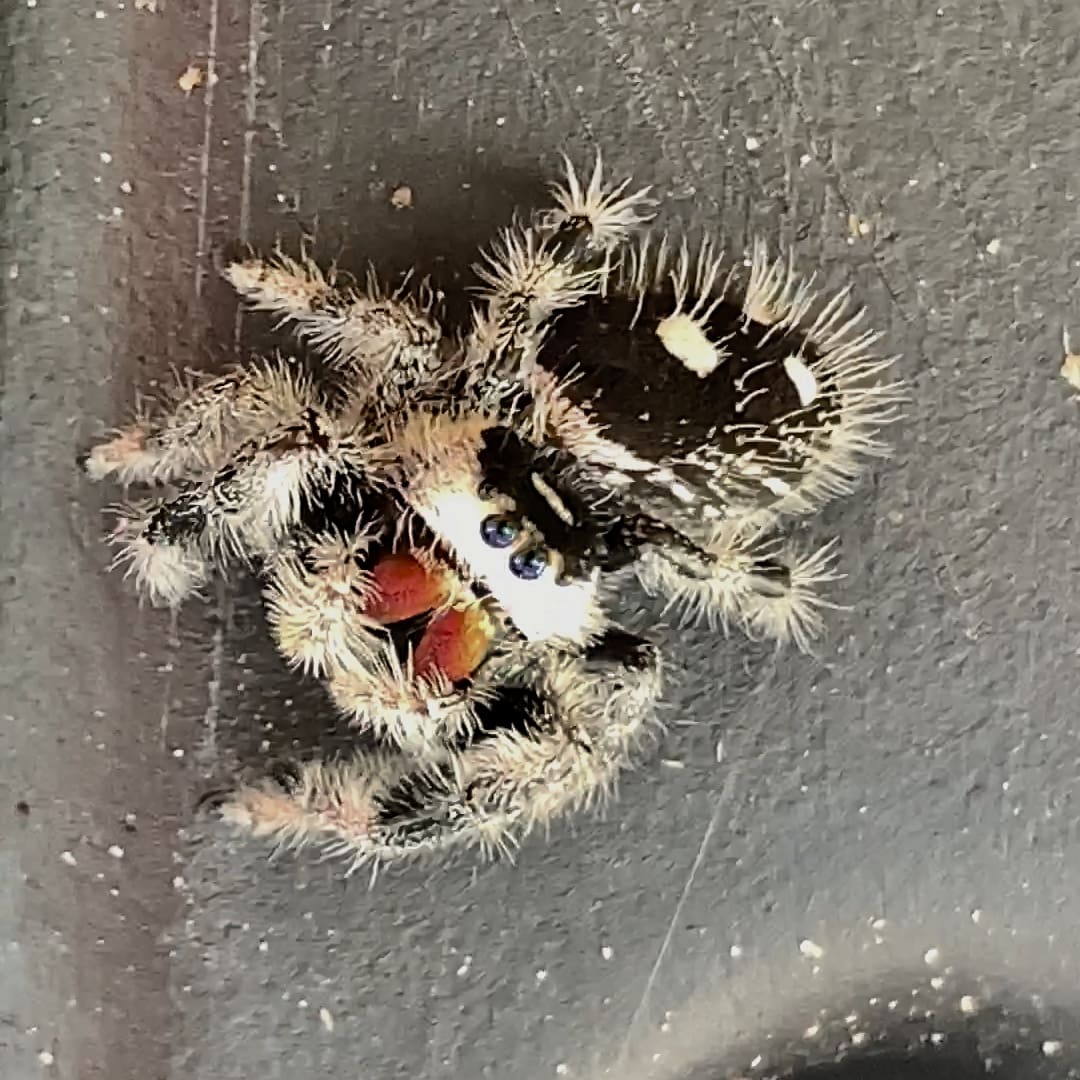
Phidippus regius (Regal Jumping Spider) in Florida United States
View cart Check out Continue shopping ★ Judge.me Reviews Phidippus regius Care Guide - Florida Locale Commonly known as the Regal Jumping Spider. Background Info: Native to North America, Phidippus regius is the largest jumping spider in the region. Adult size varies between 6 to 22mm. Though females might often be larger, size is diverse.